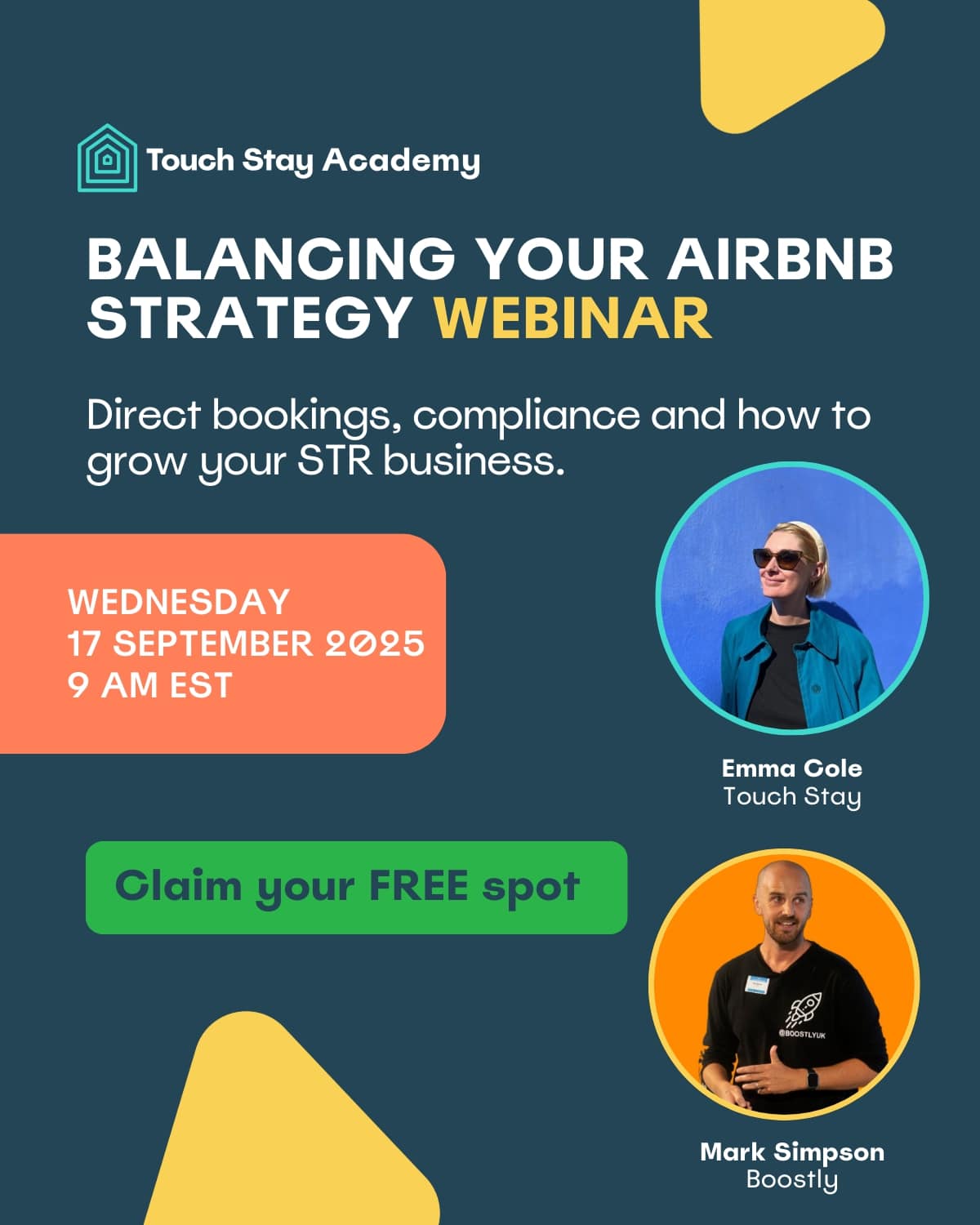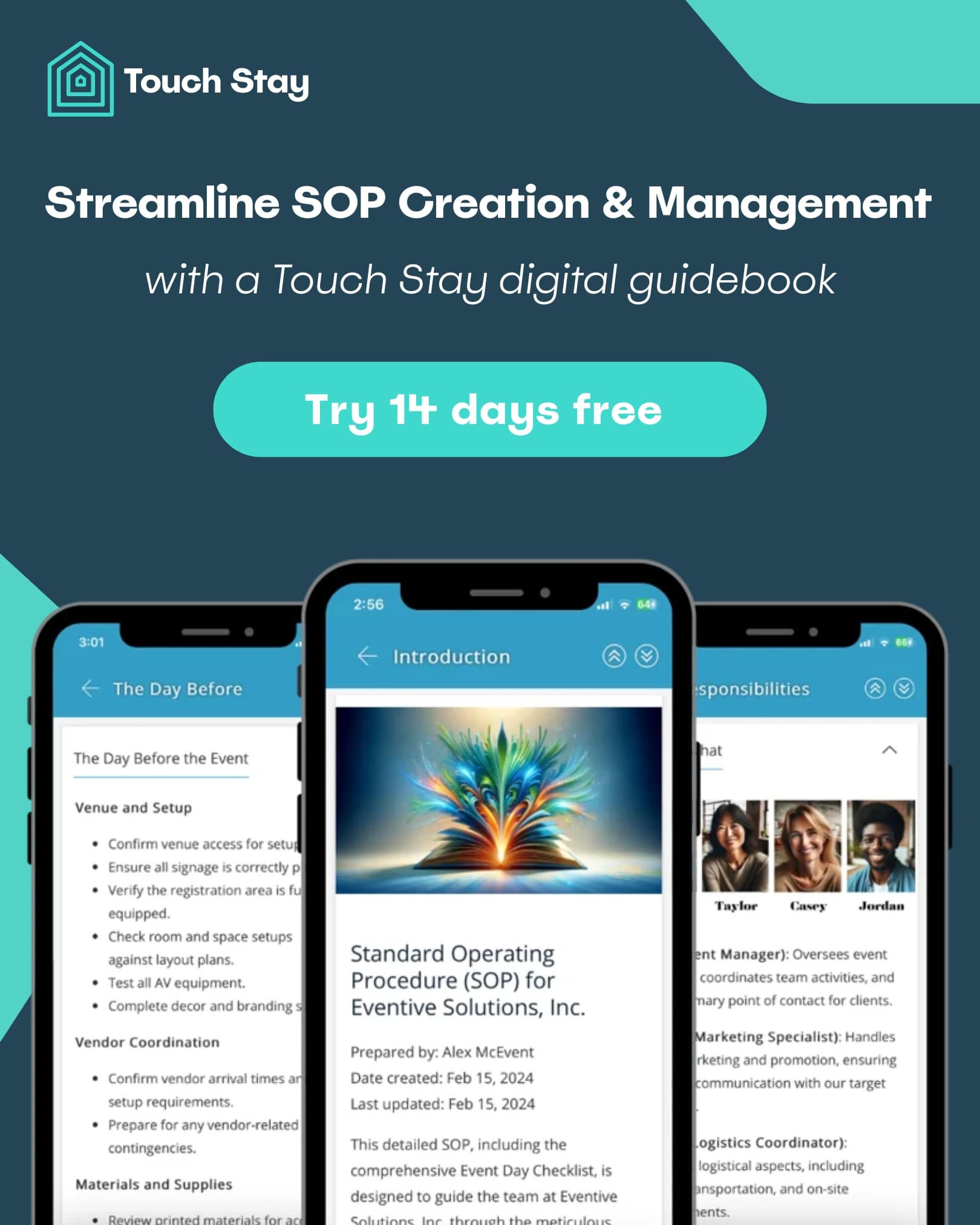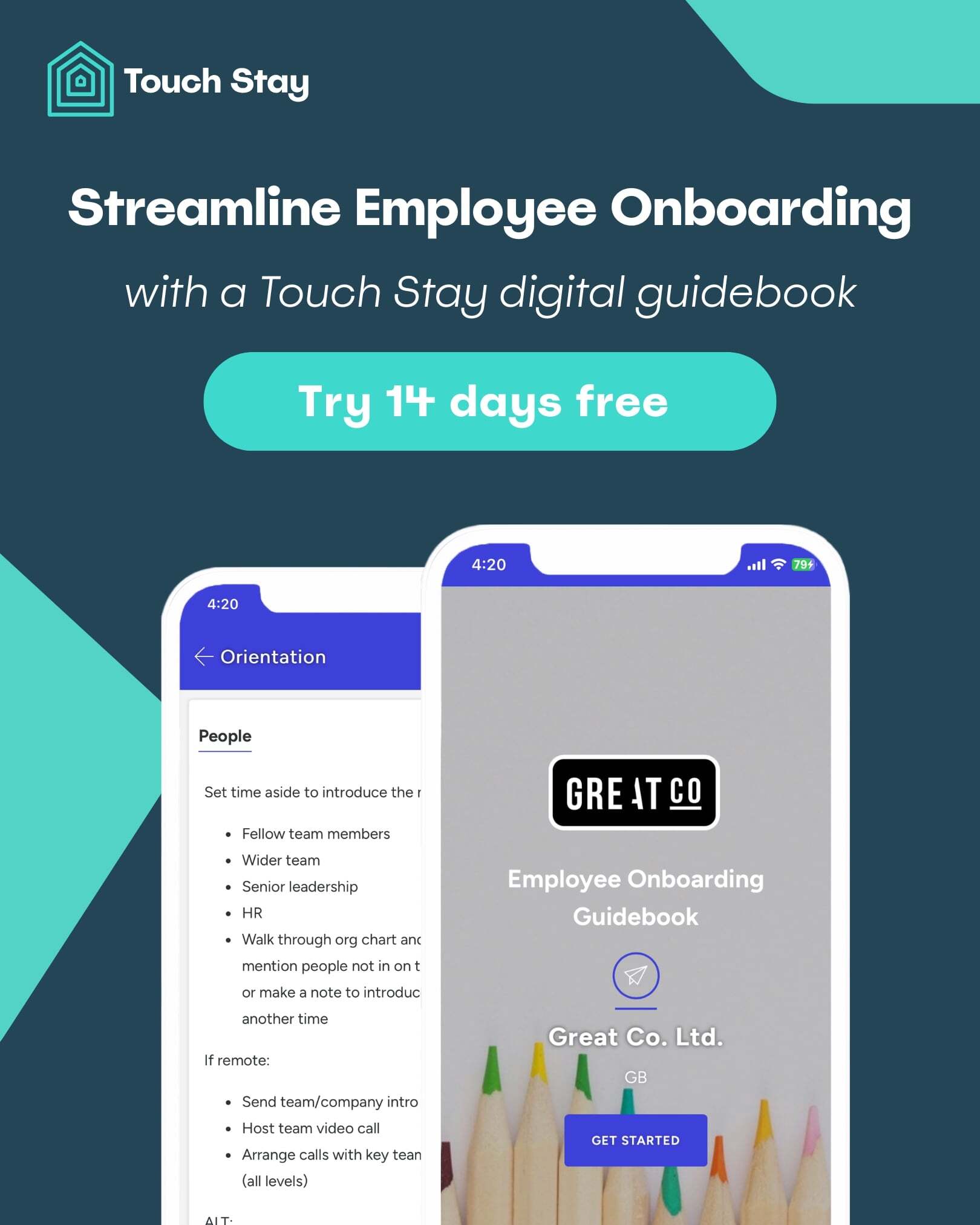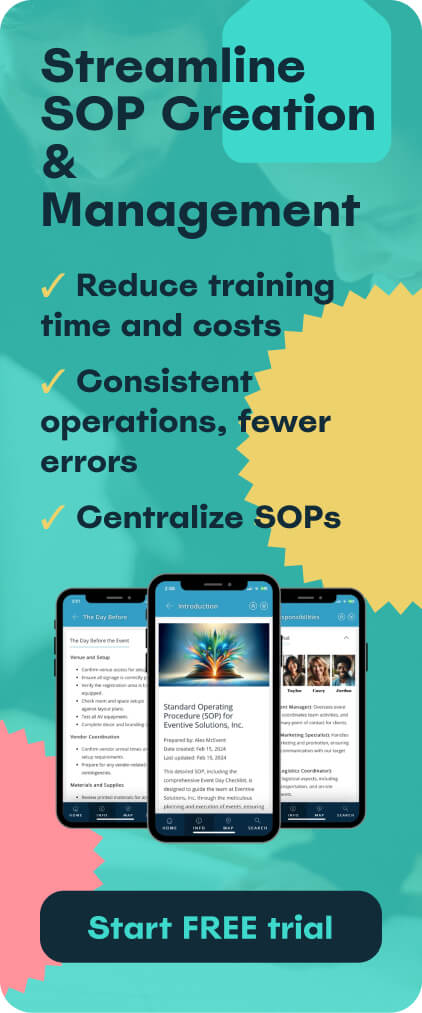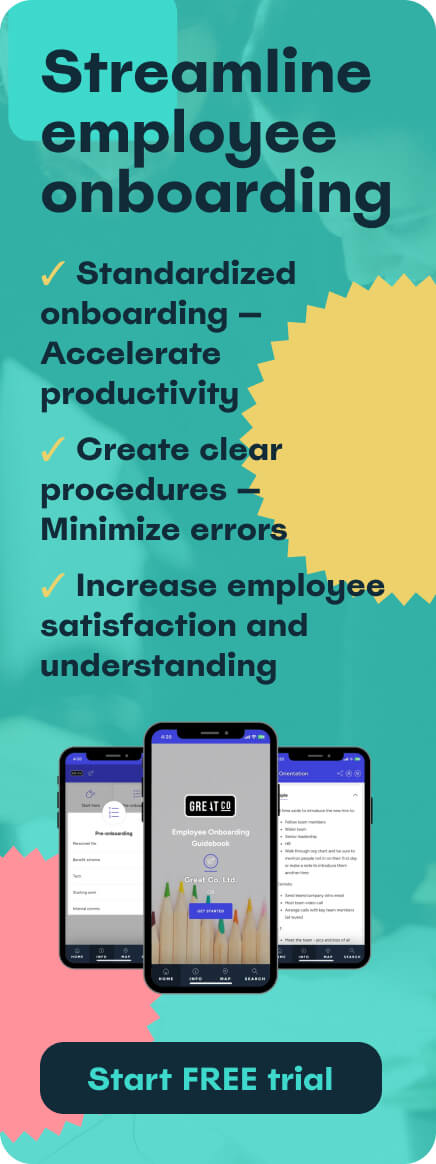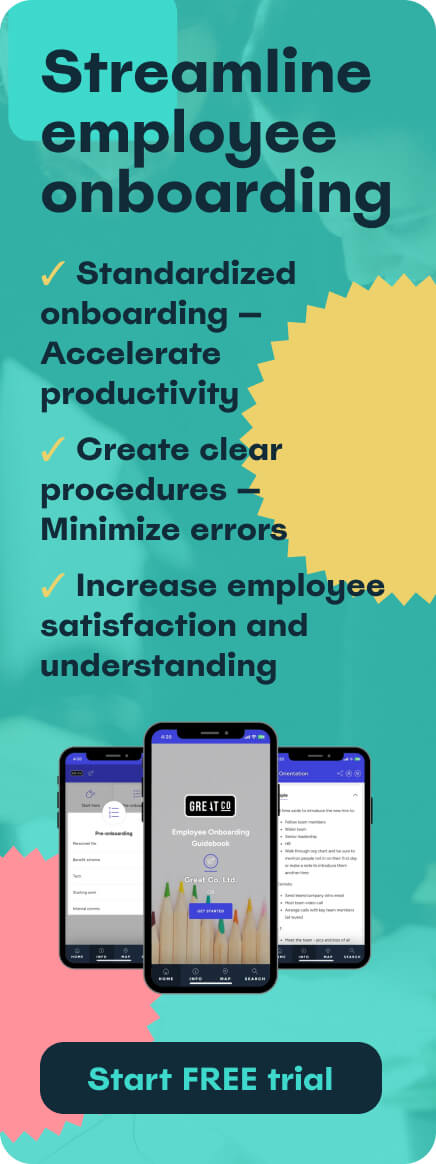Employee onboarding is a vital part of any organisation as it concerns the introduction of new workers into your business. It is much more than filling out HR forms and watching training videos, it is an individual's first experience of your company and will colour their perspective of your organisation for as long as they stay with you. Onboarding an employee is a vital part of your business operations and underestimating the importance of a good onboarding experience could cause issues further down the line.
In this article, we will answer the question ‘why is onboarding important’? Firstly, we provide insight into the definition of employee onboarding and the components of a good onboarding experience. We then detail the benefits of a robust onboarding process and why they are important to the success of your business.
To finish this guide, we offer some insights into how you can measure the success of your onboarding processes for employees. This will help you to improve your onboarding efforts and identify areas of your strategy that may need some improvement.
So, if you want to enhance your employee onboarding plan and learn more about the best practices for onboarding new employees, then this is the guide for you.
- What is employee onboarding?
- Components of a good onboarding experience
- Why is employee onboarding important?
- Measuring onboarding success
What is employee onboarding?
Employee onboarding is the process of integrating a new hire into your organisation and equipping them with the training and tools to be a successful team member. Onboarding processes for employees allow them to bed in and feel comfortable while just starting out in their new role. While it can be tempting to view onboarding as a stage that only lasts a few days, the best employee onboarding processes span weeks and months, guiding the new team member through their orientation and ensuring their future success.
Evidence suggests that a good onboarding experience can improve employee retention by up to 80%, which showcases how crucial this process is when creating a strong workforce. Despite this, studies have shown that just 12% of employees believe their organisation’s onboarding process is successful. This may seem disheartening but with the right steps your onboarding system can be a vital part of your company’s success.
Onboarding new employees typically lasts 3 to 6 months and gives them time and support to get settled in the day-to-day actions of a company. The best onboarding processes are highly engaging and personalised for each new hire, giving them their best chance to become a top-performing employee.
You can read more information about employee onboarding in this article.
Components of a good onboarding experience
There are 4 major components to onboarding which have been identified as the 4 C's; Compliance, Clarification, Culture and Connection. This framework was designed to create a comprehensive and robust onboarding experience for new employees. By ensuring that your onboarding process encompasses all these elements effectively, you can be certain that you are setting up your new hires for success in their new role.
Compliance
This is often viewed as the first level of onboarding a new employee and is a crucial part of getting them up to speed with the legal and regulatory requirements of their role. You should also make sure that they have a comprehensive understanding of company policies and procedures so they can hit the ground running. Compliance training should include coverage of workplace safety, inclusion policies and data security, if applicable.
Clarification
This aspect of the framework is crucial to ensuring the success of a new hire and integrating them into the business. Recent evidence shows that only 49% of employers provide a company overview during onboarding and this is to their own detriment.
Clarification concerns the employee’s understanding of their role and the associated responsibilities and expectations of their work. You should offer insights into the organisational structure and how the individual’s role contributes to the wider company mission.
Culture
Company culture is becoming an increasingly hot topic in the business world. Statistics show that company culture is an important factor for 46% of job seekers and 94% of entrepreneurs say that a healthy culture at work is key for success. With this in mind, exposing new employees to your company culture as soon as possible is more likely to result in a positive onboarding experience.
In order to make the transition to a new company comfortable, employees need to be immersed in your culture from day one. You should share the company's values, mission, goals and vision with your new hire and reinforce these throughout the onboarding process. This allows employees to align themselves with the company culture and contribute more effectively to the overall purpose of your organisation.
Connection
The final element of the 4 C’s framework concerns connection, allowing employees to form bonds and relationships with other members of the organisation. You should encourage new hires to network with their colleagues and provide opportunities for social interactions with their immediate teammates as well as senior leadership. A great way to establish connection while onboarding new employees is by assigning them a mentor or buddy who can help them navigate the inner workings of your organisation.
Why is employee onboarding important?
Now that you have a better understanding of what employee onboarding is and how to structure your onboarding process for new hires, we will detail some of the reasons why it is so important. From bolstering the productivity of your team to improving employee engagement and retention, onboarding has a much wider impact on your organisation than you might think.
First impressions matter
You won’t get a second chance at a first impression which is why onboarding new employees effectively is so important. Studies have found that the first 90 days of working in a new role have the largest impact on employees' attitudes about your organisation. They are also more likely to stay at your company if they have a good experience, so your onboarding process for new hires must paint your business in a positive light.
A well-structured onboarding program can contribute to a positive initial experience for new employees. If they feel supported and included they will be more driven to become effective members of your organisation. A 2019 study found that 94% of employees would stay at a company longer if their development was invested in, so providing a robust training process and developmental opportunities will vastly improve a new hire's perception of your organisation.
Accelerating time-to-productivity
Time-to-productivity refers to the duration it takes for a new employee to become fully effective in their job role after joining a company. Put simply, it measures how quickly a person can contribute meaningfully to their work and accomplish tasks independently without the need for support.
A shorter time-to-productivity is generally desirable for both the employee and the employer. It means that the onboarding process and support provided by the company have been effective in helping the new hire get up to speed quickly, allowing them to contribute to the team and company goals sooner rather than later. By tracking how long it takes for new hires to achieve their KPIs you can analyse how effective your onboarding strategy is and where you may need to improve your process.
Retention and employee engagement
Two of the largest factors that contribute to the importance of onboarding are employee engagement and retention. Research into employee attrition shows that 20% of employee turnover happens in the first 45 days of working in a new role. This goes to show that the onboarding process for employees can have a significant impact on retention within your organisation.
A comprehensive onboarding plan can foster a sense of belonging and engagement in your workforce. It allows them to feel embraced and welcomed into the business, which will make them more loyal and passionate about their role. Moreover, statistics show that a standardised onboarding process can improve employee productivity by 50%, making them much more effective and engaged with their work.
Your onboarding process for new employees should also include robust and insightful training that goes beyond the constraints of their role. A study from Axonify found that 92% of employees believe that high-quality training increases workplace engagement. Giving employees access to a range of training resources provides them with a greater understanding of the company and allows them to problem-solve more efficiently as they get settled into their duties.
Company culture integration
We mentioned culture earlier in this article but its importance in onboarding new employees bears repeating. Company culture is defined as a collection of shared values and habits within an organisation that inform the actions of its employees. By clearly broadcasting and immersing new hires into your company culture, you can determine how well-aligned they are to your business environment.
When you communicate your organisational values and behaviour expectations during onboarding you set the tone for employee conduct. This allows new employees to become more integrated into your existing culture and make their mark. By including new hires in team-building activities, away days and training sessions, you can positively impact their onboarding experience and boost your team's morale.
Measuring onboarding success
We’ve established why onboarding is important and how it can improve factors like employee retention and time-to-productivity. However, it is crucial that you analyse your onboarding process regularly to make sure that it is fit for purpose and pushes your employees toward top performance. Below we highlight some helpful onboarding metrics that you can use to establish pain points in your onboarding strategy.
Retention rates
One of the most enlightening statistics for determining the success of your onboarding is to analyse your employee retention rates. By tracking the retention rates of employees who have completed your onboarding process you can pinpoint areas for improvement.
If you have recently updated your onboarding process for new employees, compare the retention rates of individuals who completed the new program with those who did not, this will show you whether or not your new process is effective. Higher retention rates among employees who complete onboarding indicate a successful and positive onboarding process.
Time-to-productivity metrics
A great way to analyse the effectiveness of your onboarding plans is to measure the time it takes for new employees to become fully productive and familiar with their roles. This will help you to determine how robust your onboarding process is and if it is truly preparing your new hires for independent work. A shorter time-to-productivity suggests that your onboarding program is fully equipping your team and giving them the tools they need to perform at their best.
Employee feedback
One of the best ways to measure the success of your onboarding efforts is to ask for regular feedback. This doesn’t mean monthly check-ins and feedback forms, you should engage your new employees in the onboarding process and ask for their insight into how it could be improved.
You can also gather feedback from managers who work closely with your new hires and lead the onboarding process. This will give you a better understanding of challenges and gaps within your organisation's onboarding plans and will help you to update them accordingly.
Conclusion
To sum up, onboarding new employees is extremely important when it comes to the future success of your company. A robust onboarding process will give new hires a much brighter view of your organisation and is more likely to improve their engagement within their role.
Likewise, a strong onboarding program can vastly improve your employee retention rates which can be a large cost for businesses. By having a well-structured onboarding system you not only set up your new employee for success, but you also ensure the longevity of your organisation for years to come.
At Touch Stay, our digital guidebooks are the perfect resource for providing a positive and engaging onboarding experience that will fully prepare your new employees for their roles.
You can start your free trial now to see how you can create dynamic and interactive onboarding guides that will transform your onboarding process and engage your employees from their very first day.

Ned
Ned has clocked up over 11 years in digital marketing and comms, with a strong focus on creating engaging content for a range of brands and agencies. When he’s not writing, he can be found digging for records, peering through his telescope at the night sky, or onboard his local lifeboat where he volunteers as a crewmember.
Be the first to know!
Join our newsletter for early access to:
- ✅ Free guides
- ✅ Pro tips & tricks
- ✅ Time saving tutorials
- ✅ Latest blog posts
- ✅ Checklists & templates


